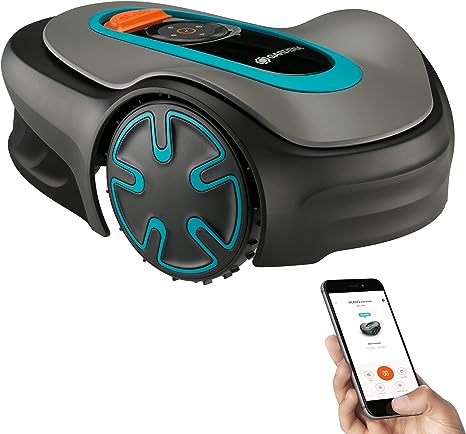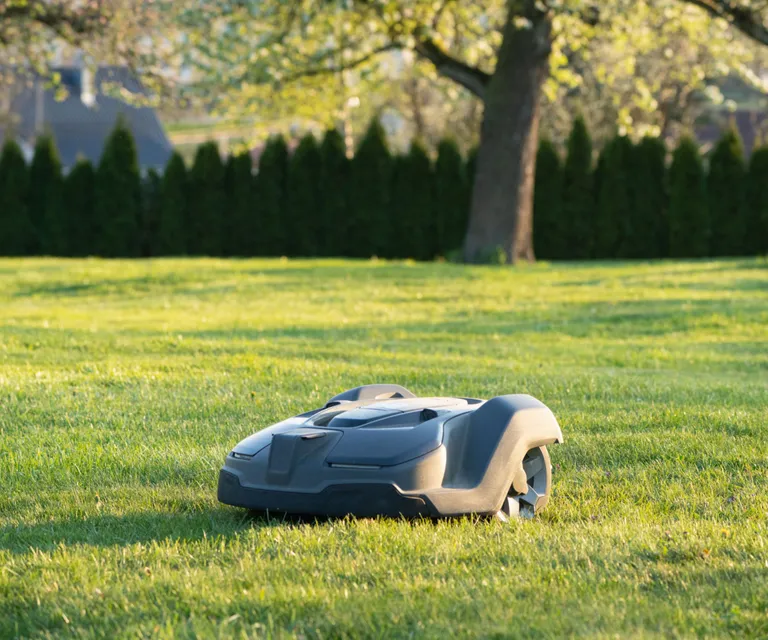Does Grass Cut Better, Wet or Dry?
Last Updated on July 29, 2025 by Duncan
Does grass cut better, wet or dry?
Many homeowners have asked themselves this question after a light rain appeared to ruin their weekend yard work plans, or when they awakened to a soggy grass from a heavy dew.
The answer is that it is not wise to trim your grass while it is damp. If you are wondering why this is the case, there are various reasons why you should wait until the lawn dries before turning on the mower.
Why you shouldn’t mow wet grass
You tend to tear the grass
Mowing damp grass is similar to giving your lawn a terrible haircut. Instead of a good trim, you get torn grass blades and discolored tips.
Mowing wet grass produces an uneven cut because of the weight of the water, causing the grass blades to bend over. When the blades are not standing straight, your mower cannot cut them uniformly, resulting in a spotty and jagged appearance.
When the grass dries and stands up straight, the unevenness becomes even more visible. This means you’ll need to mow again to get a clean and consistent appearance.
To avoid this extra labor and preserve your lawn looking its best, let it dry.
There is increased risk of lawn diseases
Mowing damp grass can provide an ideal habitat for lawn diseases to develop. When you mow wet grass, the blades are more likely to tear and form clumps, making your lawn more susceptible to fungal infections.
Furthermore, damp grass is sticky and will adhere to your lawn mower (if you do not clean the deck after mowing).
Fungi and mold can grow in clumps of damp grass, so the next time you mow, mold or fungi growing on your mower blades will spread fungal infections across your yard.
To be on the safe side, wait until your grass is dry before mowing. This way you get to prevent the spread of lawn fungi such as brown patch, anthracnose, leaf spot, and red thread.
You compact the soil more than you should
Mowing over damp soil compacts the soil, smothering the roots by cutting off their oxygen supply. This results in thin, uneven grass or ruts in your yard.
Wet grass clippings also cluster together, restricting sunshine, water, and airflow, resulting in an uneven, smothered lawn. If this occurs, your grass may require aeration to relieve compaction and allow air and water to circulate freely.
You put your safety at risk
Cutting wet grass is not only unpleasant for your lawn and mower; it is also dangerous for you. Slick grass can cause your yard to slip and slide, especially on hilly or sloping ground. This could result in injuries, transforming a routine yard activity into a safety risk.
When running an electric lawn mower in wet weather, especially one with an extension cord, you run the danger of receiving an electric shock. Water and electricity are a deadly combination, and mowing wet grass raises the risk of an accident.
To avoid all of these, wait for your lawn to dry before you mow it.
You have a poor mulching and bagging experience
Grass cuttings are a natural fertilizer for your lawn. Rather than bagging the grass, some homeowners choose to use grass clippings as mulch, leaving a thin covering of freshly mowed grass on their lawn.
This being the case, grass cycling will not function if the grass is damp. Instead of spreading naturally over the yard, grass clumps will form on your lawn. Wet grass adheres to everything, so most of it will stick to the sides of your lawn mower rather than sifting into the bag.
You can easily damage your lawn mower
Mowing damp grass might cause damage to your lawn mower. Water from the grass can leak into the gasoline tank, causing the engine to misfire or even shut down.
Wet grass clippings cluster together, clogging the suction or blade, forcing your mower to work more. When the blade struggles to spin, it puts additional strain on the engine, which can cause smoke and overworking.
Electric mowers are especially vulnerable since they have less torque than gas-powered mowers, making it difficult to push through thick, wet grass.
Moisture from wet grass blades attached to your lawn mower can also cause rust or corrosion in the blades and other metal components, resulting in costly repairs or the need to replace your mower entirely.
The lawn mower consumes more fuel
When you cut damp grass, your lawn mower uses more gasoline and its less efficient. This is because the weight of soaked grass in your lawn mower bag slows your progress and makes it more difficult to push.
This causes your lawn mower to work more to compensate for the additional weight, lowering fuel efficiency.
As you can tell, cutting dry grass means that your lawn mower isn’t overworked.
When can you mow grass after the rain?
The optimum mowing strategy is to wait 2 to 5 hours after a little rain, or a full day after heavy rain. Take a trip through your yard to assess the moisture levels. If your shoes get damp, wait a bit longer before cutting the grass.
How to tell your lawn is ready for mowing
Before you mow, do a touch test. If the grass feels moist to the touch, it’s probably too wet to mow. A visual analysis of the lawn can also help you determine its moisture content. Mow dewy grass, but avoid rain-soaked grass.
If your turf appears to be wet, postpone cutting until the circumstances improve. Saturated soil quickly ruts and turns to mud under the wheels of the normal gas-powered walk-behind mower, as well as bigger zero-turn and commercial mowers. And you don’t want this, do you?
What if you must mow wet grass? Do this.
Sometimes a long rainy spell hits, and you can’t put off your mowing chores any longer. While mowing dry grass is best, you should cut slightly moist grass rather than allowing it to grow too high.
If you have to mow damp grass, here are some ideas to make it easier:
Prepare your lawn
Before cutting wet grass, you may remove extra water by running a length of hose pipe across the lawn like a squeegee. You can also get rid of excess water by pushing it to the lawn’s edges using a wide, soft-bristled broom.
Prepare your lawn mower
If you mow your lawn when it’s damp, use a gas-powered mower with enough power to cut wet grass without overheating. If the ground feels spongy due to waterlogging, keep in mind that utilizing large, heavy ride-on mowers can cause rutting and damage to your turf.
Wet grass is more likely to tear when mowed, weakening the turf and making it more susceptible to fungal and other grass diseases, so make sure your lawn mower’s blades are properly sharpened before cutting wet grass.
Nothing clogs a lawn mower faster than damp grass. To help manage this while mowing a wet grass (and avoid stopping frequently to clear the mower deck and unblock the chute), make sure the mower deck is clean before starting the cut.
Then use a mower deck spray or silicone spray. This will provide a nonstick coating on the mower deck, preventing wet grass cuttings from accumulating.
You also should raise your lawnmower’s height one or two settings above where you regularly cut your grass.
When mowing follow the ‘one-third’ guideline to remove only the top third of the damp grass.
Be strategic with your mowing
Before cutting wet grass, ensure that you are wearing appropriate, non-slip footwear on your lawn. When operating your lawnmower, take extra precautions to avoid slipping. Maintaining a tight grip on the mower and preventing unexpected movements is critical for your safety.
Wet grass is difficult to cut cleanly with lower settings. So, set your mower as high as possible. as mentioned, take your time mowing soggy grass. Moving slowly is not only safe for you, but it also allows the mower blades to cut more efficiently and prevents an uneven finish.
When mowing, maintain a low pace and move slowly to prevent stress on the mower blade, engine strain, and to maintain an even and complete cut. Make regular stops to remove cuttings.
Using a bagger attachment to collect cuttings will also result in a cleaner finish.
Wet grass weighs more, so empty the mower’s bag or collection box periodically to keep the weight down. This reduces tension on the mower and makes it less likely to cause ruts in wet grass.
If possible, instead of mulching or bagging, choose the side discharge option. This is because wet grass clippings can clog a mulching mower and accumulate within a bag making your work more difficult.
You should keep your lawn mower blades in good condition by keeping them sharp and adjusting the height based on the length of the grass. This ensures a cleaner, more even cut. Take the time to clean your mowing equipment after mowing.
After mowing, thoroughly clean your lawnmower to remove any accumulated grass and dirt. To avoid long-term damage, thoroughly clean your mower and mower deck, and inspect your lawn on a regular basis for signs of damage and illness.
Be smart and cut your grass when dry
Can you mow wet grass? Sure, if you want to deal with serious mowing issues such as compacted soil, lawn illnesses, unevenly clipped grass, or mower damage. To avoid these issues, make it a rule to only mow your lawn when it is dry.


